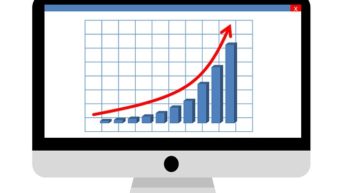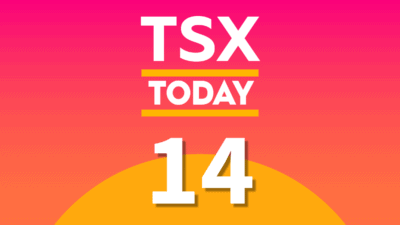There’s no question that Dollarama Inc. (TSX:DOL) has been an exceptional investment. Since 2010, the dollar store has delivered an annualized return of more than 36% for its shareholders!
Compare that to the average U.S. market returns of 10% and an even lower return on the Canadian market.
Is Dollarama too expensive?
Notably, since 2010, Dollarama’s price-to-earnings multiple (P/E) has expanded from about 13.7 to about 31.6. In hindsight, the stock was cheap when it traded at a multiple of, say, below 15, given that it had been growing at a double-digit rate.
In most years, Dollarama managed to increase its earnings per share by more than 20%. From fiscal 2012 to 2018, Dollarama’s earnings per share increased by more than 25% per year on average.
For the next three to five years, it’s estimated that Dollarama will grow its earnings per share by about 15% per year. If it achieves that, then at best, the stock is fully valued today.
If Dollarama’s growth slows down further, it will undoubtedly experience multiple contractions, which will at least prevent it from flying high as it has in the past.

Where will Dollarama’s growth come from?
Dollarama has about 1,160 stores across Canada, and it is still growing its network. The company aims to grow the number of stores to up to 1,700 stores by 2027, and it is expanding its distribution centre in Quebec by about 50% to cater to that growth.
Dollarama is also able to increase the prices of its products. For example, in fiscal 2018, 67.1% of its sales originated from products priced higher than $1.25, compared to 63.4% in fiscal 2017.
Dollarama should be recession-proof because shoppers would particularly look for bargains in bad economic times.
Five Below Inc. (NASDAQ:FIVE) is another alternative in the space for investors. Although the stock isn’t cheap trading at a P/E of about 36.2 at roughly $70.40 per share, it likely has more runway for growth than does Dollarama, as Five Below only has about 625 stores in 32 U.S. states.
Five Below’s products are priced at $1 to $5, targeting eight- to 14-year-olds and their parents. People look for bargains no matter where they live. Five Below has had success with stores in urban, suburban, and semi-rural areas. Its key metrics, including net sales, operating income, net income, and earnings per share, have been growing on average by 25-29% per year in the last five years or so. Through 2020, management forecasts sales growth and net income growth of 20%.
Investor takeaway
Dollarama is still expected to grow at a double-digit rate for the next three to five years. Moreover, it’s a high-margin retailer; its recent net margin was 15.9%.
One downside is that the stock is pretty fully valued. So, buyers today shouldn’t expect rates of returns of 30% or even 20%. Returns of about 10-15% per year for the next few years are a more reasonable expectation.
Five Below will probably be a better investment for growth. However, the stock has run up. So, it isn’t cheap. If everything goes smoothly for the company, it’s possible to get a 15-20% rate of return from the stock.
For a bigger margin of safety, wait for further dips on these two stocks. If I had to choose one today, I’d start scaling in to Five Below.
 Spring Sale
Spring Sale







